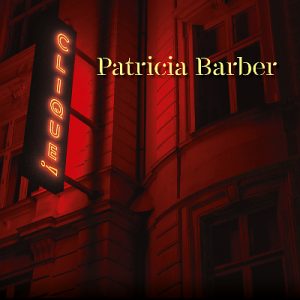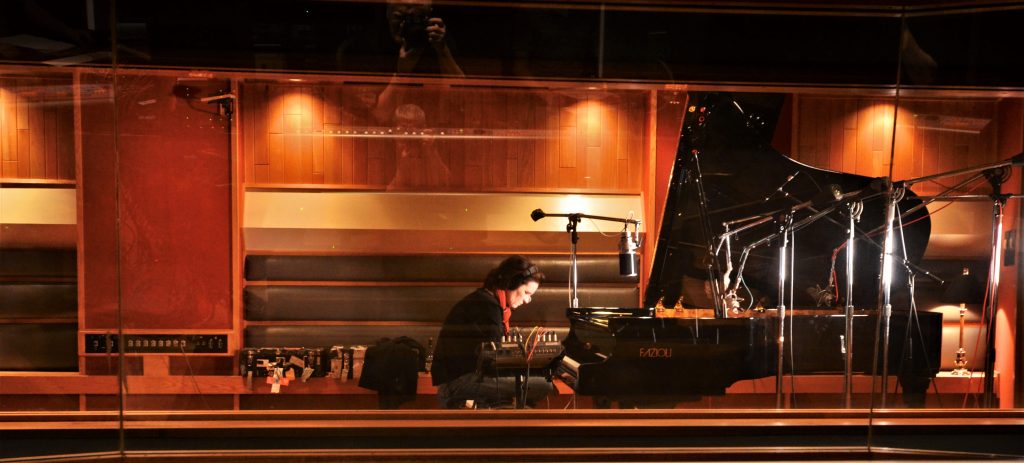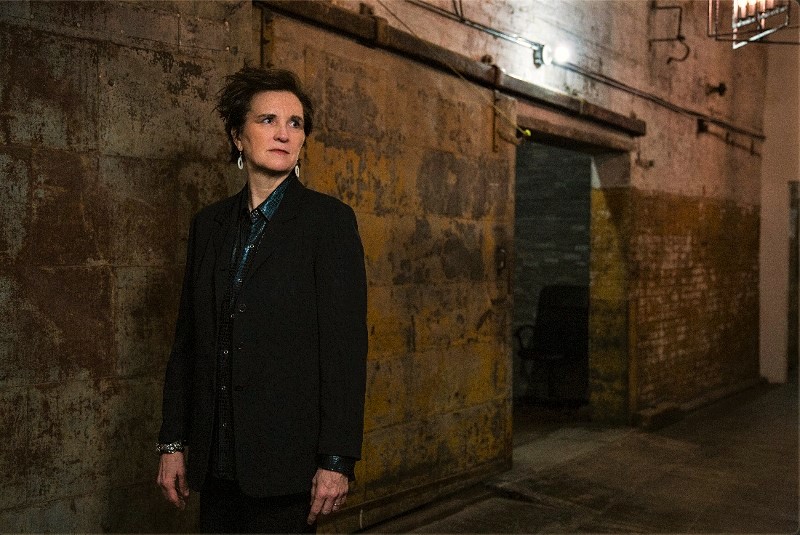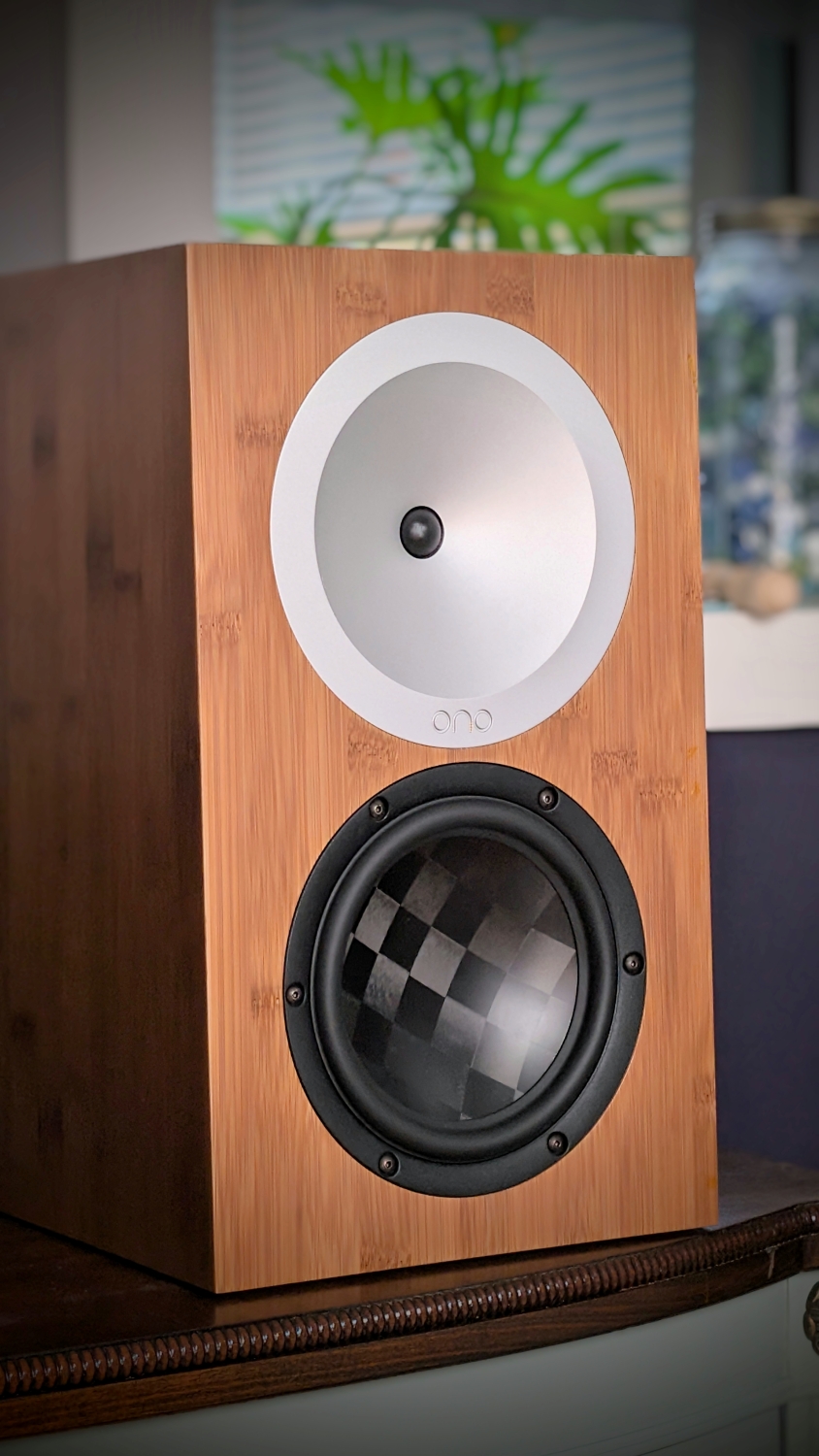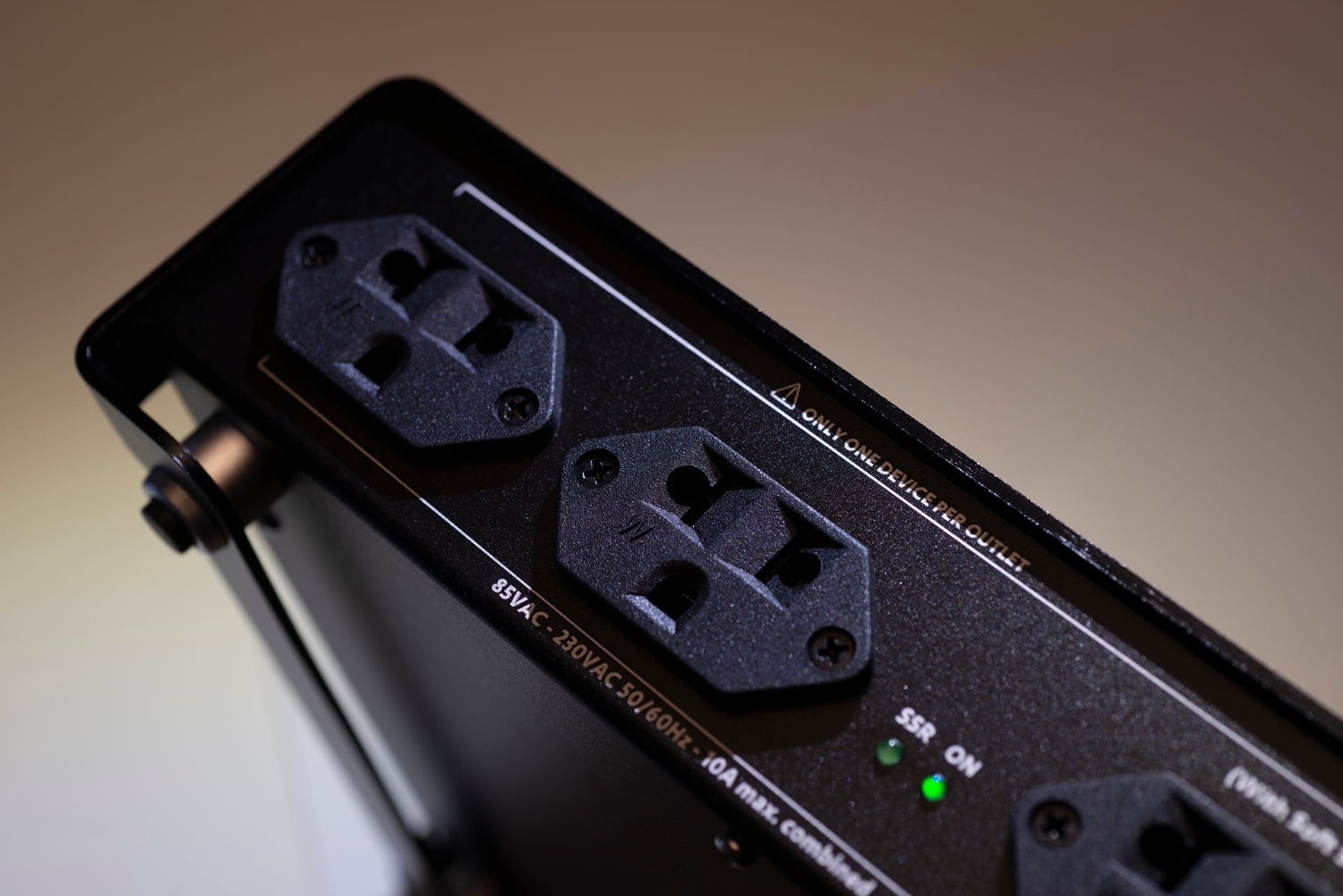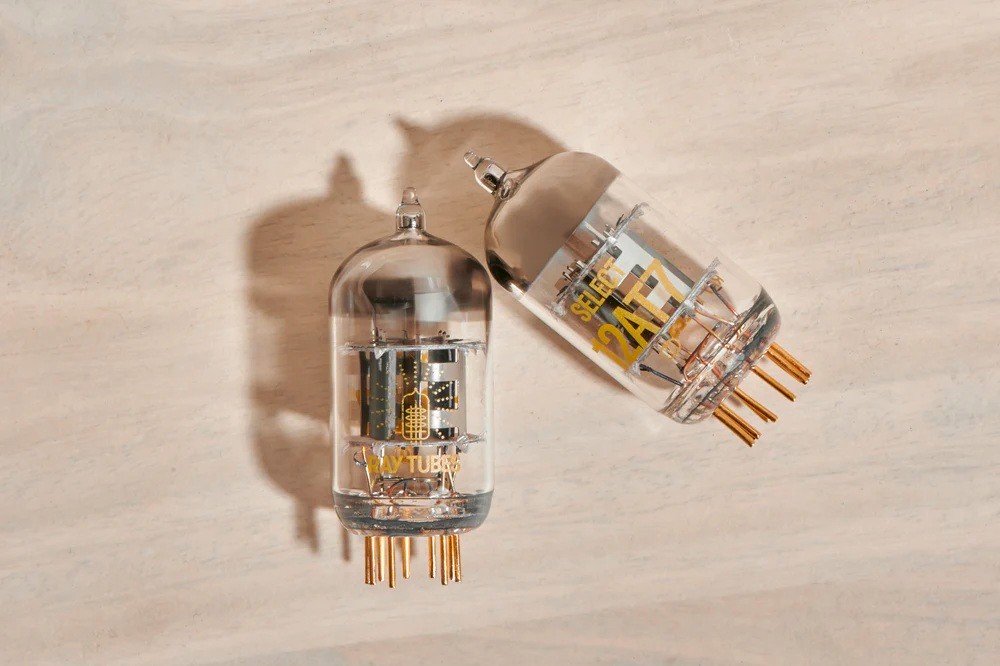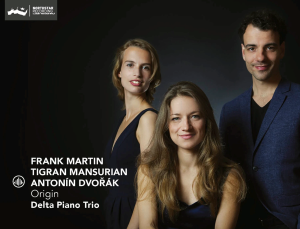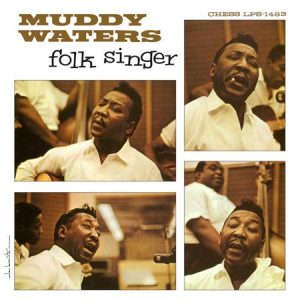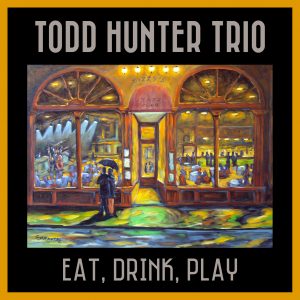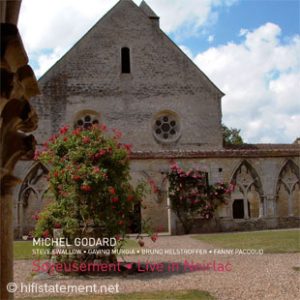I wasn't raised from birth to be a jazz-hound; that came about as a happy accident of Reaganomics, where I suddenly found myself out of a job and ended up working again in 1990 in the commercial print industry. Where I spent the next seven years in a 1940's era bunker of a building that had virtually zero radio reception; wearing a personal portable wasn't an option, so I was limited to the two stations whose signal I could easily get. Which were the local Atlanta college jazz station (WCLK, Clark-Atlanta University) and a now-defunct AM classical music station. I spent my days getting schooled on WCLK in the music of Brubeck, Monk, Miles, Dizzy, Sonny Rollins, Bill Evans, Bud Powell—you get the picture. And I'd alternate with long-form symphonic works throughout the days of the week—I didn't know this at the time, but those experiences prepped me like nothing else for my upcoming gig as a music journalist not too far down the road.
I'd been something of an audio gearhead for a couple of decades, and had long-running subscriptions to both Stereophile and The Absolute Sound, and about the mid-nineties, started noticing full-page ads from record resellers like Analog Productions and The Elusive Disc. Which almost always featured prominently an album by an artist I had no familiarity with, Cafe Blue by pianist and singer Patricia Barber. I was curious, but my jazz record buying didn't really extend at that point beyond local indie record shops in Atlanta, several of which specialized exclusively in jazz music. My daughter relocated to Chicago in the 2000s, and frequent extended visits there found me engaged in crate-digging deep dives in some of the Windy City's best record shops, where I scored CD copies of Patricia Barber's Cafe Blue (1994), Modern Cool (1998), and Nightclub (2000), and on PB's home turf, no less.
My listening experiences at WCLK had familiarized me with the body of work of classic jazz vocalists like Ella Fitzgerald, Sarah Vaughan, and Dinah Washington, and I was beginning to gain an appreciation for more mainstream (and homogenous) artists like Diana Krall, who suddenly was all the rage. But nothing prepared me for the quirky, offbeat, post-modern jazz stylings of Patricia Barber; her scintillating mix of off-kilter originals and stylized covers of jazz and pop standards was unlike anything I'd ever heard. Needless to say, this was intoxicatingly strange new territory for me—I was almost instantly hooked! I've basically been on a buying binge over the years, getting just about every album in PB's catalog, as well as springing for high-resolution downloads where available. Despite my overall love for her body of work, there's something about the standards album Nightclub that has had me constantly coming back for more; the DSD digital download is definitely one of my go-to albums for high-end audio equipment evaluation.
As both an audiophile and a music lover, part of the continued allure of Patricia Barber's albums is that they're so very well-recorded, and that's due in no small part to her longtime creative partnership with multi-Grammy winning engineer Jim Anderson. His relationship with her goes all the way back to 1994's Cafe Blue, and his artistry and expertise at the control panel has consistently captured Patricia Barber and her accompanists on record with a shockingly good level of sympatico and realism. Jim Anderson is essentially the "fifth Beatle" in Patricia Barber's musical orbit; as Thomas Conrad of Jazz Times has noted, "His recordings render every inflection of [Patricia Barber's] voice with such presence and clarity you can feel her breath on your face."
Patricia Barber has developed an almost cult following as an artist; in 2003 she was bestowed the first-ever Guggenheim Fellowship awarded to a non-classical songwriter. And she was elected to the prestigious American Academy of Arts and Sciences in 2019. Despite an impressive string of studio and live albums spanning two decades, while constantly touring in support of those albums—including an ongoing gig at the Green Mill jazz club in Chicago—she entered an extended period of recorded silence from 2013 until the release of 2019's Higher. Which was her first release on the Impex label, and was recorded at Chicago Recording Company's Studio 5 in DXD (Digital Extreme Definition), 32-bit/352.8 kHz high resolution sound with Jim Anderson again at the controls. The record is comprised of an art-song cycle of Barber originals, and it debuted to rave reviews. According to Downbeat, "Barber braids wrenching, elemental poetry into a private musical language fashioned from the yearning ache of Bill Evans' piano, Joni Mitchell's zigzag introspections, Jobim's winking mix of high end philosophy and pastel melody and an occasional explosion of skronk and funk." Talk about your garden-variety fusion of diverse elements into song!
Clique
Recorded at the same sessions as Higher, Clique is Patricia Barber's twelfth studio album, and finds her again visiting an eclectic mix of standards from the Great American Songbook and elsewhere. Many of the tunes here have been frequently employed as encores in her live performances. Clique is essentially a trio date featuring Patricia Barber on piano and vocals, Patrick Mulcahy on bass, and John Deitemyer on drums; a couple of tunes get fleshed out with appearances by Neal Alger on acoustic guitar and Jim Gailloreto on tenor saxophone. And Clique is her first record since 2000's Nightclub that consists entirely of covers—well, mostly—more on that in just a bit.
The nine songs here cover a diverse range of territory that runs a much broader gamut than Nightclub, which hewed fairly closely to the "standards" mantle. Clique opens with a really effective bass intro from Patrick Mulcahy on Lee Hazlewood's "This Town," which Frank Sinatra covered in 1967. Of course, Ol' Blue Eyes needed a full orchestra to make the tune swing, but Barber proves with a confident vocal that she owns this tune without all the unnecessary bombast. You know without a doubt that Chicago has been "the make or break you town" for her. Jim Anderson's microphone placement for Mulcahy's bass is sheer perfection—you really get a great sense of the "woodiness" of the bass—a quality that's severely lacking on so many jazz recordings. Alec Wilder's "Trouble Is A Man" was first popularized by Sarah Vaughan's 1947 recording; Barber's rendition is darker and more mysterious—we're talking serious trouble, here! Listen to John Deitemyer's cymbal and brush work on this song, which absolutely shimmers; broken record, I know, but Jim Anderson's microphone placement is everything!
"Mashup," which is a Barber original—and the first of two instrumentals found on Clique—is an eight-minute trio romp that's sort of an homage to jazz trios of days gone by. But trust me, no cocktails are being served here—we're more in the post-bop region more commonly occupied by the likes of Keith Jarrett, Gary Peacock, and Jack DeJohnette. Jobim's "Samba de Uma Nota Só (One Note Samba)" is given a much more subdued performance than typically heard, and guitarist Neal Alger provides a perfectly appropo bossa nova solo that adds authenticity to the proceedings. Two Broadway numbers, Lerner & Loewe's "I Could Have Danced All Night" (from My Fair Lady) and Rodgers & Hammerstein's "Shall We Dance?" (from The King and I) are both given readings that are about as diametrically juxtaposed to the originals as seemingly possible. Jim Gailloreto adds a tasty tenor sax solo to the latter, and while Barber's vocal approach on each is definitely darker than the originals, who needs another Julie Andrews/Marni Nixon hyper-styled vocalization of either?
Billy Page's "The In Crowd" is a duo between Barber and Mulcahy, and opens with another off-the-chain Mulcahy bass intro; Barber's more pensive delivery is definitely more streetwise and savvy than either of the classic recordings by Dobie Gray or Ramsey Lewis. Pianist and bassist solo liberally off each other; this variation of "The In Crowd" seems more likely centered around the shadowy underbelly of Chicago's nightlife! An expansive version of Monk's classic "Straight, No Chaser" is the album's second instrumental; everyone gets plenty of room to stretch out. Whereas Deitemyer's work throughout the album has been to mostly provide texture, he gives the skins a major pounding here, while Mulcahy solos like Hell has no fury. Barber's pianisms would definitely make Monk smile with their abundant eccentricities; the six-minute run time goes by waaay too quickly here! Clique closes with a very heartfelt and poignant rendering of Stevie Wonder's classic "All In Love Is Fair," where the obvious emotion in her voice makes it abundantly clear that she's no stranger to heartbreak. Barber's opening piano solo is achingly beautiful, and Mulcahy and Deitemyer lay out until the second chorus. Where they relegate themselves to supporting roles, but the overall brilliance of Jim Anderson's recording here is maybe the album's finest moment.
Listening Results
When Taylor Perry of Shorefire Media contacted me regarding the possibility of a review, after reading the advance press release information, I literally jumped at the opportunity! And especially considering that the album was recorded using the Horus/Pyramix DXD system, then mixed on an all-analog Neve console with no compression, limiting, EQ, or digital reverb—I definitely wanted to hear the DXD files. When the link to those arrived, the zipped file was a shockingly large 7 GB—I eventually had to download each track individually in order to get them without the download crapping out!
And, of course, I hadn't even considered whether my fairly high-end digital playback system was even capable of handling the DXD files. I could get the files to play, but couldn't confirm that I was getting full-resolution playback. I found out from PS Audio that my Stellar Gain Cell DAC was only capable of playing back the DXD files through its I²S digital input—even though I was getting playback, some kind of file conversion must be going on. And, of course, my Euphony Summus digital streaming setup—though capable of 32-bit/352.8 kHz digital file output—didn't have an I²S digital output. Not to worry, though; I was able to very quickly order a Chinese-made USB digital interface unit ($56 USD from Amazon) that had the correct outputs and has worked perfectly in my system. Actually, listening to everything over I²S has been a revelation compared to streaming via the USB connection!
About the same time as Clique arrived, I had just gotten in review equipment from Wells Audio, the Commander line stage tube preamplifier and the Inamorata II power amplifier (review forthcoming on Positive Feedback). All my listening was done in combination with my PS Audio Stellar DAC and the Euphony Summus streaming system, with all playing into my Magneplanar LRS loudspeakers and a pair of subs from Definitive Technology and REL.
So how does Clique sound in high resolution DXD? My initial response (stolen from Stereophile's John Atkinson) in my notes was gobsmacked—that was very quickly followed by "this is easily the finest sounding digital file in my library of over 3500 albums!" One of the great things about flat-panel loudspeakers like the Magneplanars is that when properly set up, they'll display a realistically wide and deep soundstage. Meaning Patricia Barber and company are occupying a really believable space in my listening environment; close your eyes, and you feel like you can literally reach out and touch the players in front of you. Jim Anderson did a great job capturing the performances on Clique, and on a really great system, you'll be stunned by the realism and unbridled dynamic range of the recording. When Patricia Barber sings, it's as though she's really in the room with you!
Q and A with Patricia Barber
In the very hectic week leading up to Clique's release date on August 6, I had an opportunity to engage in a question and answer session with Patricia Barber. I thought it would be instructive to get some insight into her relationship with her producer, bandmates, and her creative process.
How long have you been playing with your current combo?
I've been playing with Patrick Mulcahy and Jon Deitemyer about 10 years. Also Jim Gailloreto on tenor saxophone and Neal Alger on guitar are in and out of the tours for just as long. Lately we've been traveling as a trio and Jim and Neal join us for special dates. It took me a long time to be confident enough to present myself as a trio, but it has been so popular, perhaps I should have done it earlier.
Do they also participate in your ongoing residence at Chicago's Green Mill Jazz Club?
Yes, we've been all over the world together as well as playing Monday nights at the Green Mill.
I know the pandemic and everything, but any idea when you plan on resuming your touring schedule?
I'll wait for the general infection rate to go much lower, and for all venues, [air]planes, etc. to have vaccine checks. At least that. And since the streaming companies have taken all of our royalties, there is much less incentive to spend all that time composing.
I've read in some of the promo materials that most of the tunes on Clique have generally served as encores in your live performances. When you do resume touring, will the songs here share more prominent space with your typical setlists? How much of Higher do you plan on programming into your setlists?
The tunes on Clique are in the sets we've been doing for Higher. The original material on Higher is the cake and the tunes on Clique are the icing on the cake. One can think of Clique as the "Patricia Barber-without-the-dark-side."
Nightclub is one of my favorite albums, and one that I often use for evaluating audio equipment. It has definitely now been surpassed by Clique, which is easily the finest sounding digital file in my library of 3,500 albums. How do you feel the two albums compare?
Personally, I think the ‘band' is tighter on Clique as we have been working together in and out of the country for years. I also think losing the ubiquitous 4th player and working with the trio opens up a lot of sonic space, and Jim Anderson knows how to record silence.
Abey Fonn of Impex Records seems very cool. How do you like working with an audiophile label like Impex?
Abey is definitely cool. So far my experience working with an audiophile label has been fantastic!
Working with Jim Anderson seems like a match made in heaven. Any thoughts on your process with him in the studio?
Jim knows me well since we've been working together for so many years. He's seen me through many different labels and passages of life. I have always loved Jim's calm and expertise. That very special combination gives me confidence, and confidence in the studio is everything.
How in God's name do you manage to swim in the icy waters of Lake Michigan every day?
The water in Lake Michigan is often cold, but not always. When it is cool, or cold, I ask myself, "What would you do if this were the last day of your life—would you turn back or swim?" The answer is always "Swim!"
Conclusion
Clique is an exceptional recording; one of those rare events where all elements of the creative process amalgamate to yield a record of perfect performances and technical brilliance. An SACD copy of the album is on its way here, but didn't show up in time for inclusion in the review. This album is being made available in a multitude of formats, but as great as the DXD files are, I don't see how you could go wrong if your DAC/streaming setup is capable of DXD's very high level of resolution. Very highly recommended!
Tracklist
- This Town (Lee Hazlewood)
- Trouble Is A Man (Alec Wilder)
- Mashup (Patricia Barber)
- Samba de Uma Nota Só / One Note Samba (Antônio Carlos Jobim/Newton Mendonça)
- I Could Have Danced All Night (Lerner & Loewe)
- The In Crowd (Billy Page)
- Shall We Dance? (Rodgers & Hammerstein)
- Straight No Chaser (Thelonious Monk)
- All In Love Is Fair (Stevie Wonder)
Available Release Formats
In 2010, Impex Records rose from the ashes of the legendary Cisco Music label, which was founded in Japan in 1968 and has been run since 2008 by Abey Fonn and the same core group of audio lovers who transitioned Cisco to the Impex label. Cisco Music elevated the state of the art of analog reissues by partnering with outstanding engineers from Japan to pioneer a line of audiophile LPs that included King Records' Super Analogue Disc; those excellent albums are considered among the finest reissue LPs ever produced.
While the Impex Records website only currently includes order information for the stereo/5.1 multi-channel SACD and the MQA CD releases, Clique will also be made available in a number of other audiophile formats. Including the excellent 32-bit/352.8 kHz DXD download I used for review purposes, along with 33 ⅓ and 45 rpm LPs; Clique will also be available for high-resolution digital streaming on major sites such as Qobuz and Tidal.
Patricia Barber: Clique. Super Audio CD (Stereo/5.1): $34.99 MSRP. MQA CD: $19.99.
Patricia Barber - patriciabarber.com
Impex Records - impexrecords.com
All images provided by Shore Fire Media






